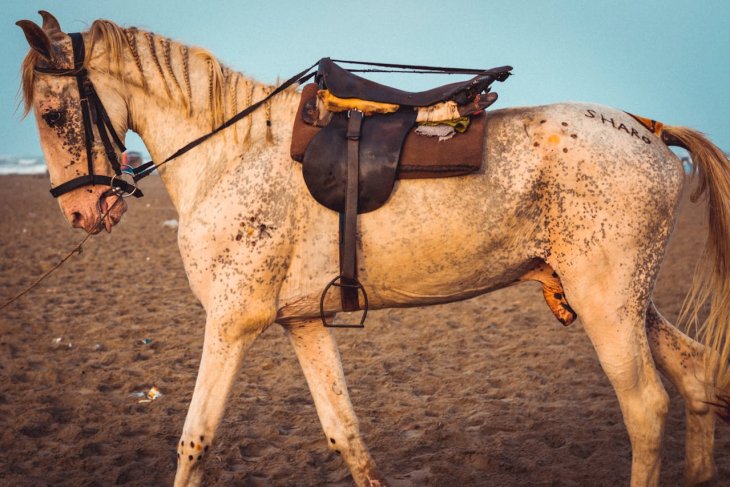The zoot suit stands as one of the most iconic and controversial symbols in American fashion history. Its exaggerated design, vibrant colors, and unique style not only redefined men’s fashion but also became a powerful symbol of cultural identity and resistance. Born from jazz culture and elevated by minority communities, the zoot suit remains a testament to the interplay of style, rebellion, and identity in American society.
The zoot suit remains remembered even though it is mostly gone. The Chicano Rights Movement’s ascent in the late 1960s and the resurgence of swing dancing and music in the early 1990s led to its resurgence as a kind of vintage fashion. The swing group Cherry Poppin’ Daddies released their album “Zoot Suit Riot” in 2001.
According to Peiss, “it keeps coming back because it is an extreme style of men’s dress, and most men wear styles that are relatively conservative, which tend to make them inconspicuous.” “It still holds sway over the imagination.”
The Rise of the Zoot Suit
The origins of the zoot suit trace back to the 1930s, during the rise of jazz and swing culture in the United States. This period marked an era of bold self-expression, especially for African American, Latino, and Filipino youth who embraced the zoot suit as a statement of individuality and style. With its long jacket, wide lapels, high-waisted pants, and baggy silhouette, the zoot suit was anything but subtle. It challenged the conservative norms of the time and embodied a sense of freedom and exuberance that resonated with the rhythms of jazz.
The zoot suit’s popularity grew within urban centers, particularly in cities like New York, Los Angeles, and Chicago. It became closely associated with “zoot suiters,” a term used to describe young men who wore the suit with pride, often accompanied by wide-brimmed hats and long chains. These individuals used fashion to assert their identity and navigate the complexities of racial and economic inequality.
The suit’s boldness and defiance also made it a target for criticism. During World War II, fabric rationing painted the zoot suit as a wasteful luxury, sparking tensions between its wearers and the broader society. Nevertheless, it continued to thrive as a cultural statement among those who embraced its symbolism.
The Zoot Suit Riots and Cultural Significance
The Zoot Suit Riots of 1943 marked a turning point in the history of the zoot suit, cementing its role as a symbol of cultural pride and resistance. These riots occurred in Los Angeles during a period of heightened racial tensions and wartime anxieties. At the heart of the conflict was the clash between zoot suiters, predominantly young Latino men, and servicemen who viewed their attire as unpatriotic and provocative.
The riots began when tensions boiled over into violent confrontations, with servicemen attacking zoot suiters in the streets, often stripping them of their clothing as a form of humiliation. These events highlighted the deep-seated racial and cultural prejudices of the time, as the zoot suit came to represent more than just a fashion choice. It symbolized defiance against societal norms, a stand for cultural identity, and resistance against discrimination.
In the aftermath, the zoot suit’s significance only grew. It became an emblem of solidarity for minority communities, a visual reminder of their resilience and pride. Over time, it has been celebrated in art, literature, and theater, most notably in Luis Valdez’s play Zoot Suit, which brought the story of the riots to the forefront of American consciousness.
The Zoot Suit in Modern Fashion
Decades after its initial heyday, the zoot suit continues to inspire contemporary fashion. Designers have revisited its classic elements, reinterpreting them in modern collections that celebrate its history while adapting it to current trends. From high-fashion runways to retro-inspired streetwear, the zoot suit’s influence is unmistakable.
Modern formalwear often borrows from the zoot suit’s bold proportions, with tailored suits that feature exaggerated shoulders and wide-legged trousers. Retro styles for men, including those inspired by the zoot suit, have seen a resurgence in vintage fashion movements, appealing to individuals who appreciate its rich cultural history.
Celebrities and artists have also played a role in reviving the zoot suit’s legacy. Music videos, performances, and themed events often pay homage to the zoot suit era, blending its classic charm with contemporary aesthetics. This revival underscores the enduring appeal of the zoot suit as a symbol of creativity and individuality.
How to Style a Zoot Suit Today
Incorporating a zoot suit into a modern wardrobe may seem daunting, but with the right approach, it can make a bold and stylish statement. Here are some tips for styling a zoot suit in today’s fashion landscape:
- Mix Old and New: Pair a classic zoot suit jacket with slim-fit trousers or jeans for a balanced look that blends vintage and modern elements.
- Accessorize Thoughtfully: Add contemporary accessories such as a sleek tie, pocket square, or modern shoes to update the zoot suit’s aesthetic.
- Play with Colors: Embrace the zoot suit’s tradition of bold colors and patterns, but consider modern palettes like muted tones or monochromatic schemes for a more current vibe.
- Focus on Fit: Tailoring is key to ensuring a zoot suit looks polished and intentional. Work with a tailor to achieve the perfect fit that flatters your body type.
- Confidence is Key: The zoot suit is all about making a statement. Wear it with confidence and embrace its rich history as you make it your own.
Whether for a themed event, formal occasion, or creative fashion statement, the zoot suit offers endless possibilities for those willing to experiment and celebrate its unique charm.
Conclusion
The zoot suit is far more than just a piece of clothing; it is a cultural and historical icon that has shaped American fashion and identity. From its origins in jazz culture to its role in the Zoot Suit Riots, it has carried profound significance for generations. Today, its legacy lives on, influencing modern fashion and inspiring individuals to embrace bold self-expression.
By honoring the history and style of the zoot suit, we celebrate not only its impact on fashion but also its enduring role in championing individuality and cultural pride. The zoot suit remains a powerful reminder of the intersection of style, resistance, and identity in American history.





















